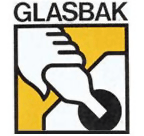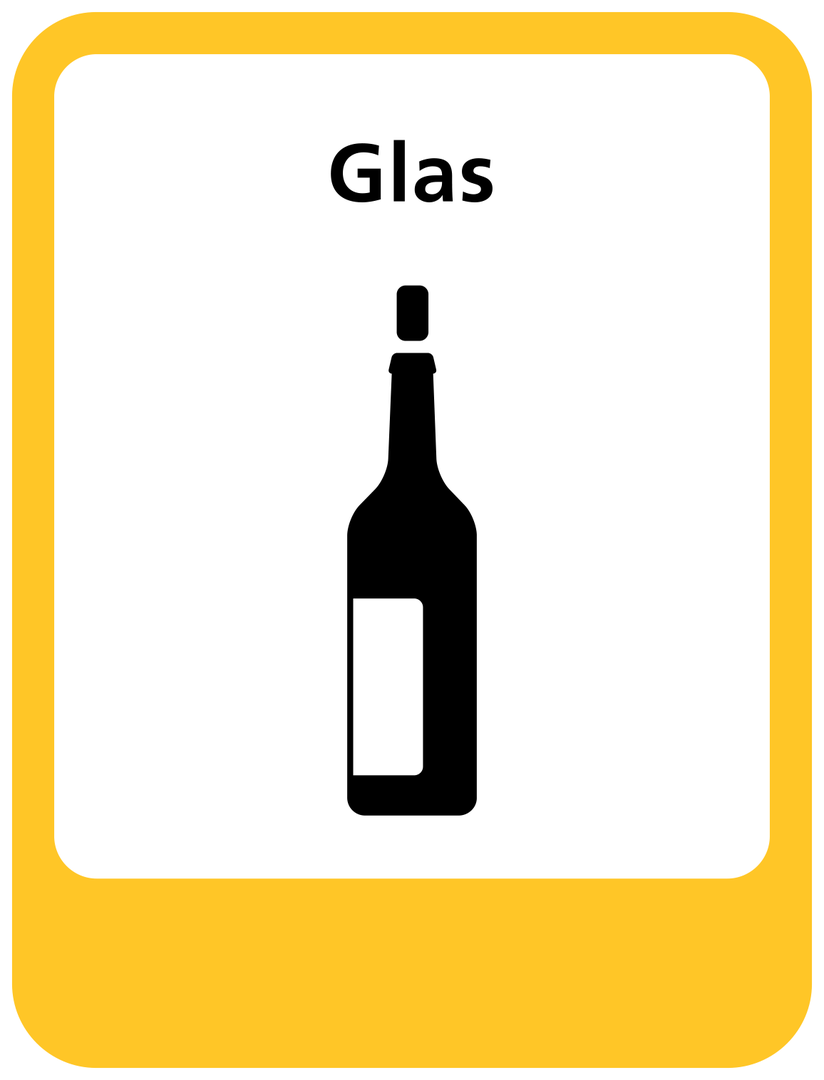All glass bottles and jars from the glass containers are recycled.
 We collect glass packaging separately from residual waste. This way, they can be recycled. You can take them to a bottle bank. There is always one in your neighbourhood, for example in the neighbourhood or at the shopping centre. In the glass container may (glass) jars and bottles that have contained food, drinks or cosmetics. Make sure the packaging is empty. Lids and caps can be left on. Other small types of glass include under residual waste. You can offer large pieces of glass to one of the environmental centres.
We collect glass packaging separately from residual waste. This way, they can be recycled. You can take them to a bottle bank. There is always one in your neighbourhood, for example in the neighbourhood or at the shopping centre. In the glass container may (glass) jars and bottles that have contained food, drinks or cosmetics. Make sure the packaging is empty. Lids and caps can be left on. Other small types of glass include under residual waste. You can offer large pieces of glass to one of the environmental centres.
Bottles and jars that are allowed in the bottle bank can be recognised by the bottle bank logo on the label.
Glass that you do not put in the bottle bank, but throw in the residual waste, is not recycled but incinerated with the residual waste. This glass is lost forever. In the Netherlands, we already recycle 86% of all glass packaging. Our country leads the world in glass recycling.
What belongs where?
For convenience, we list the separation rules of packaging glass.
In the glass container
Glass bottles, such as:
- wine bottles
- beer bottles without deposit
- liquor bottles (note: no stoneware jugs)
- bottles of fruit juices, syrups and thick juices (made of glass)
Packaging glass, such as:
- jam jars
- spaghetti sauce bottles or jars
- olive oil bottles
- mayonnaise pots
- sambal pots
- spice jars
- transparent glass cream jars
- glass yoghurt pots
- baby food jars made of glass
Not in the glass container
At the residual waste
- light bulbs
- drinking glasses
- stone jars (e.g. gin)
- shards of glass
- crockery (such as coffee and tea cups and plates (porcelain))
To the environmental street
- car windows, glazing, window glass and other flat glass (in the special flat glass container)
- fluorescent lamps
- shower enclosure
- wired glass
- reinforced glass
- fibreglass insulation material
- glass wool insulation
- halogen lamps
- heat-resistant glass (such as oven dishes)
- plexiglass
- ornamental glass too big for the bottle bank
- energy-saving bulb
- mirrors
- stone pitchers (gin)
- uv lamps
- vase (glass or other material)
- sunbed lamps
Glass in the glass container is recycling
 Glass can be endlessly and 100% recycled. Cullet is made into new glass bottles and jars. This can be done infinitely many times. Because once glass is made, it always remains glass and retains its good quality.
Glass can be endlessly and 100% recycled. Cullet is made into new glass bottles and jars. This can be done infinitely many times. Because once glass is made, it always remains glass and retains its good quality.
The cycle of glass
The cycle works as follows. We collect the glass from the glass containers with a collection car. The white (colourless) glass goes into one compartment of the car, and the other colours (green, brown) into another. This keeps the glass separated by colour. Exactly as you put it in the glass container. The collection vehicle transports the glass to the specialised glass recycling company.
At this company, the glass goes through an entire route past sophisticated separators. Contaminants such as lids, heat-resistant glass, ceramics, stone and porcelain are removed from the glass. You help enormously in an efficient recycling process if you only put packaging glass in the glass container and no waste. After the food waste is removed from the cullet, the clean cullet goes to glass factories as raw material. The glass factory melts the cullet and turns it into new bottles and jars. The bottles and jars go to the food industry. These pack products in them, which you buy. After use, you put the bottles and jars back in the glass container. Then the whole recycling process starts all over again.
21 kilograms of glass per person, 430 million kilograms in total
Thanks to this cycle, every shard of glass from the bottle bank stays in the glass packaging chain. In our country, 86% of the glass entering the market is collected for recycling. This is an average of 21 kilos per person, 430 million kilos of glass in total - every year. Recycling glass saves glassworks primary raw materials (sand, soda, lime) for glass production: 1 tonne of cullet saves 1.2 tonnes of sand and other raw materials. And they save 2.5% energy, and therefore CO2 emissions, with every 10% use of cullet. 1 tonne of cullet saves 0.6 tonnes of CO2-emissions in the chain.







